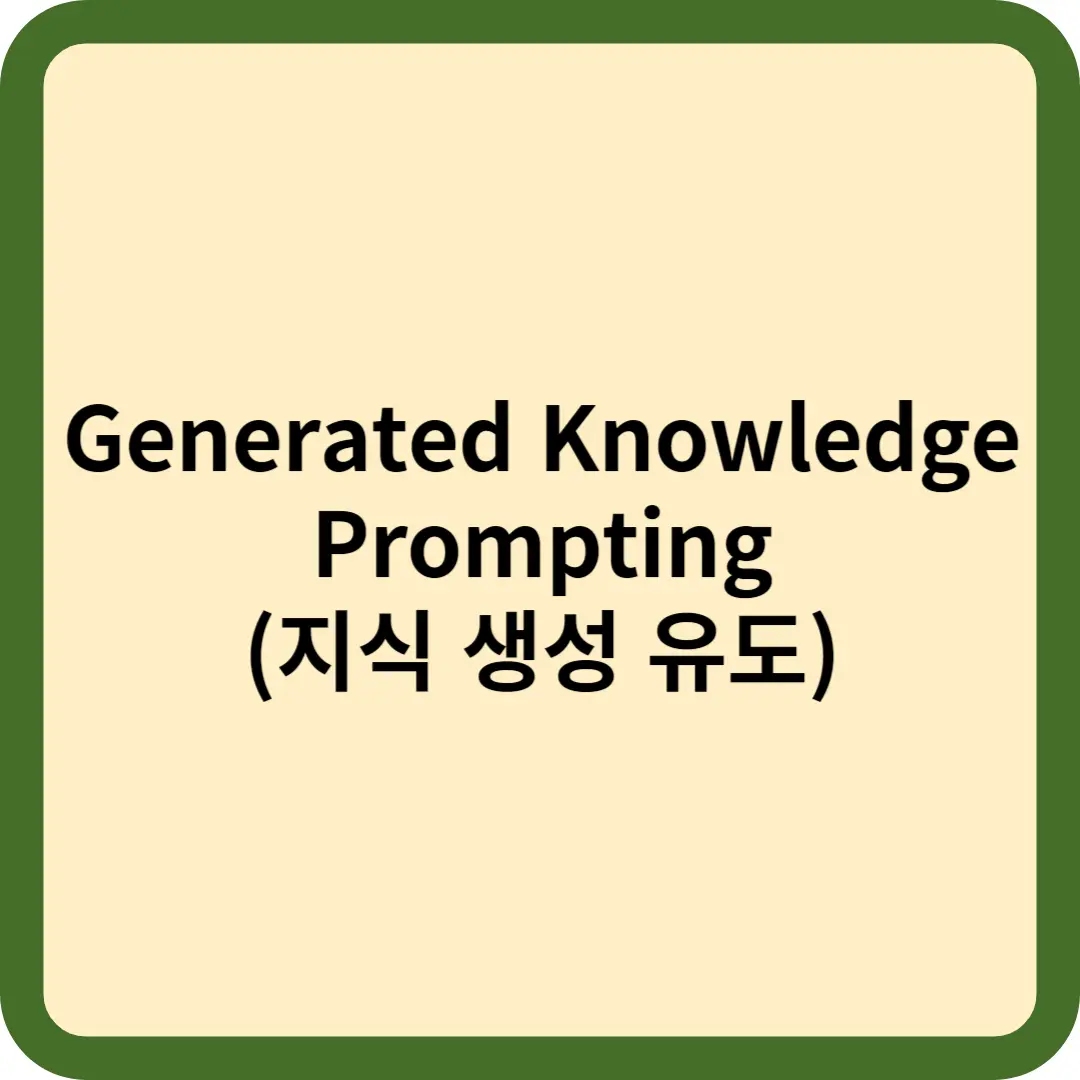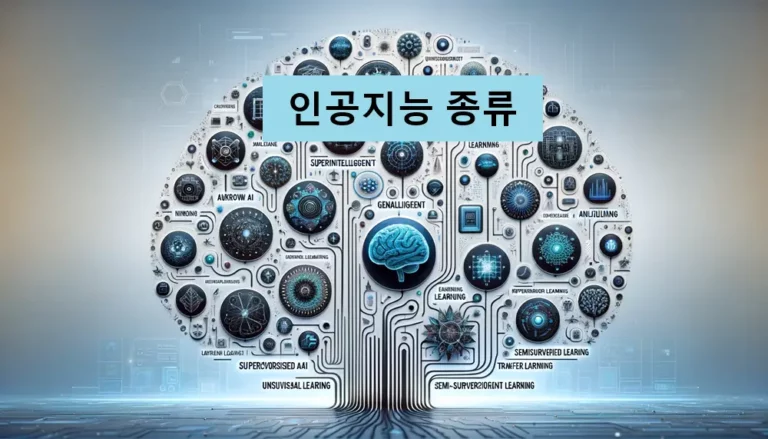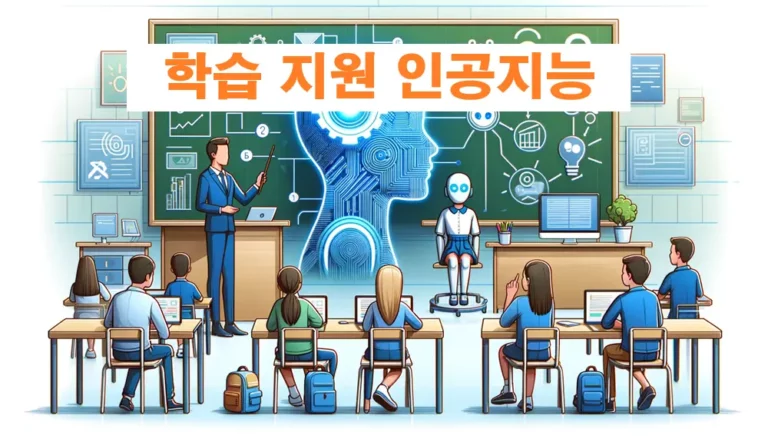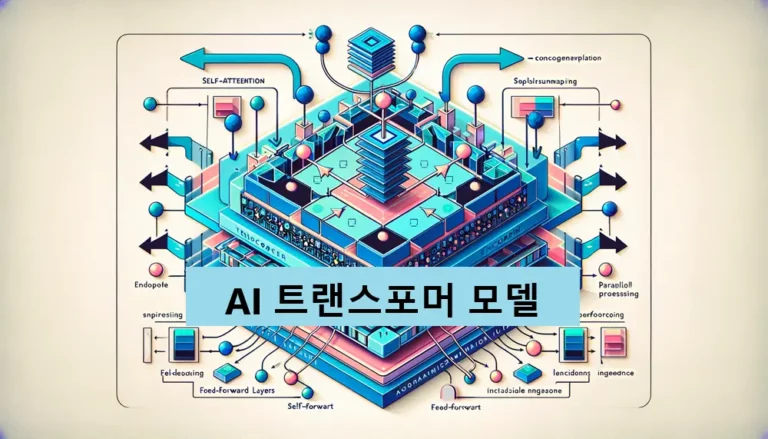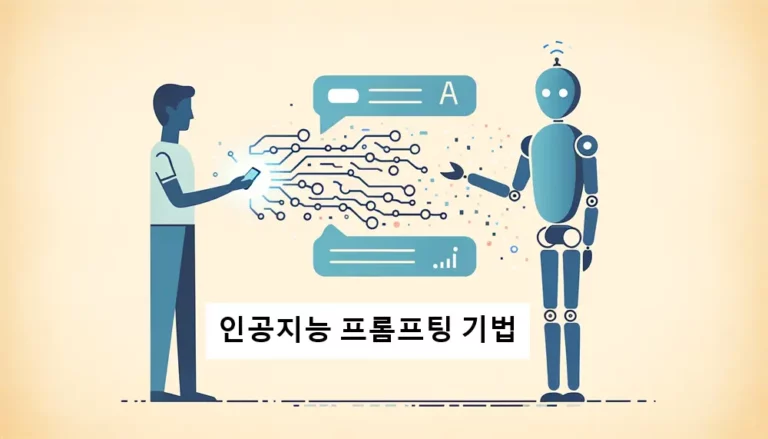Generated Knowledge Prompting: Making your AI assistant smarter
What is Generated Knowledge Prompting? If you’ve ever used ChatGPT, you’ve probably experienced that sometimes the AI gives answers that seem too casual, vague, or unprofessional. How do you overcome this situation? Let’s take a look at prompting methods to make your assistant, the AI, smarter.
Introduction: AI meets “Generated Knowledge Prompting”
Advances in artificial intelligence (AI) technology have transformed many aspects of our lives. In fields as diverse as healthcare, education, and environmental protection, AI’s application is opening up possibilities for a better future. At the center of this is the effort to enable AI to mimic human thinking to solve more complex problems. As part of this effort, the concept of “Generated Knowledge Prompting” has emerged.
Since there is currently no set Korean translation for Generated Knowledge Prompting, and it is used variously as “generated knowledge prompting,” “knowledge generation prompting,” and “knowledge generation prompting,” we will use the term Generated Knowledge Prompting by default in this article and “knowledge generation prompting” for Korean translation, as it makes the most sense in context.
Generated Knowledge Prompting is a process of prompting engineering that enables AI to go beyond simply retrieving or remembering information from existing databases to generate new knowledge on its own and solve problems based on that knowledge. It is an important development that transforms AI from a simple information processing tool to a creative problem solver.
The importance of this technique lies in its potential to overcome the limitations facing AI and take its performance to the next level. By allowing AI to generate and reason about information on its own, it will be able to provide more accurate and in-depth answers. This greatly improves the usefulness of AI, especially when it comes to solving problems that require common sense or reasoning.
In this article, we’ll start with the basic concepts of Generated Knowledge Prompting, how it improves AI’s problem-solving capabilities, and how it’s having an impact through real-world applications. Understanding how Generated Knowledge Prompting enables AI to produce better results will provide insights for humans to use AI technology more effectively.
Definition and Need for Generated Knowledge Prompting
Definition
Generated Knowledge Prompting is the process by which artificial intelligence (AI) generates its own relevant knowledge about a given problem or question and uses it to provide more in-depth and accurate answers. This technique helps AI models go beyond simply reacting based on previously trained data to generate original solutions or ideas for new situations or problems.
The need
Traditional AI approaches are designed to perform specific tasks by learning patterns from large amounts of data. While this allows AI to react based on what it already knows, it has limitations when it comes to flexibility in responding to new situations or complex problems. For example, when an AI is faced with a new type of question or problem that doesn’t exist in its historical data, it may struggle to generate appropriate answers.
The need for Generated Knowledge Prompting emerged to overcome this limitation. This technology allows AI to go beyond its existing knowledge or data and generate its own knowledge for new situations and apply it to the solution. This enables AI to act as a more independent and creative problem solver, greatly expanding its reach and effectiveness.
Generated Knowledge Prompting also helps AI to communicate more naturally with humans and mimic human reasoning. By doing so, AI can provide information in a more accurate and human-understandable way, which can contribute to increasing the usefulness of AI in a variety of fields, including education, healthcare, scientific research, and more.
In conclusion, Generated Knowledge Prompting is an essential technology for improving the performance of AI and enabling it to respond more flexibly and creatively to new problems it may encounter. It is expected to be an important leap forward in the future development of AI technology.
How it works: How AI creates knowledge on its own
In Generated Knowledge Prompting, the process by which AI generates knowledge on its own involves several technologically advanced steps. The process is based on a mechanism that utilizes training data from large language models and learning algorithms to derive new information or interpretations of a given problem.

If you ask an AI a question out of the blue and without context, it will respond with an unrefined answer that is within its knowledge. The answer will either not fulfill the intent of the questioner or will be of poor quality.
As shown in the figure, by asking relevant foundational questions in advance to get the desired answer, the questioner allows the AI to generate the specific and in-depth knowledge to create a quality answer.
AI’s knowledge generation process
- Data processing and training: AI models process vast amounts of textual data, and in the process learn about the structure of language, context, and information about different topics. This step is essential for AI to have a basic understanding of language.
- Problem analysis: When analyzing a given question or problem, the AI uses the data it has been trained on to identify areas of knowledge that are relevant to the key elements of the problem. This is the step that forms the AI’s initial understanding of the problem.
- Knowledge generation: Based on the information identified in the problem analysis phase, AI generates relevant new knowledge or information. During this process, the AI references data it has already learned and comes up with new interpretations or solutions to the problem.
- Generate a response: Based on the knowledge generated, the AI ultimately forms an answer to your question or problem. This answer incorporates the knowledge generated and provides a more accurate and in-depth interpretation of the problem.
Techniques and algorithms used
- Deep Learning: A technique based on neural networks that can learn complex patterns from large datasets. It plays a key role in language modeling.
- Transformer: Used in natural language processing (NLP), it is a model architecture based on the Attention Mechanism, which effectively learns the relationships between words in a sentence and enables more accurate contextual understanding.
- Reinforcement Learning: A method of learning the optimal behavioral strategy through trial and error to achieve a specific goal. In the “Prompting Generated Knowledge” course, this helps AI learn how to generate and apply knowledge more effectively.
Through these techniques and algorithms, Generated Knowledge Prompting gives AI the ability to go beyond simple data processing and actually generate new knowledge and come up with original solutions to complex problems. This is a significant step forward for AI’s reasoning and problem-solving capabilities, further expanding the application of AI technology.
A simple example of Generated Knowledge Prompting
In this section, we’ll give an example of how the Generated Knowledge Prompting process can increase the sophistication and depth of the answers that an A.I. (language model) returns to us.
If we ask a language model A.I. out of the blue, “What are the effects of throat changes on polar bears?”, the A.I. will be able to draw on its knowledge and answer the question while its brain is still reeling from the sudden question.
Climate change is melting Arctic ice, which is threatening the polar bear's habitat. As the ice shrinks, polar bears are finding it harder to find enough food, and the environment they need to survive is shrinking. These changes could lead to a decline in polar bear populations.If a questioner hears an answer like this, they may not be wrong, but they may feel that the answer is lacking in depth and insincere. This is where Generated Knowledge Prompting comes in.
With Generated Knowledge Prompting, when we ask a complex question, we can give the AI the prior knowledge it needs to answer it.
In the polar bear question above, the answer vaguely contains the required content, but feels lacking in depth.
- “Climate change is causing the Arctic ice to melt. This is reducing the polar bear’s habitat.”
- “Polar bears must travel over a larger area to find food, which poses an additional challenge to their survival.”
- “Polar bear reproductive rates have been observed to be decreasing, which may be related to the rate of ice melt.”
Provide the AI with additional knowledge before the question so that it is prepared to enrich the answer. This is the process of using the generated knowledge to guide the answer. The result can be a change in the answer, such as
Rising temperatures in the Arctic due to climate change are causing rapid melting of Arctic ice. This is accelerating the shrinkage of sea ice, the primary habitat of polar bears, which in turn is reducing their hunting grounds. In particular, key prey resources such as seals are becoming less accessible, which directly impacts their nutritional status and ability to reproduce. Recent studies have shown that shrinking ice is forcing polar bears to travel over larger areas, which increases their energy expenditure and reduces their survival and reproductive rates. These environmental changes are also causing changes in their behavioral patterns, and in some areas, an increase in human conflicts. All of these changes can lead to long-term ecosystem fluctuations, such as declining polar bear populations, which can have serious implications for the balance of the Arctic ecosystem.Here’s something we want to make sure readers don’t misunderstand. If you’re reading this and expecting to walk into ChatGPT right now and ask, “What is the impact of climate change on polar bears?” and get a “freaked out A.I. blabbering away,” you’d be sorely mistaken. The above example is meant to put into context how Generated Knowledge Prompting works.
Advanced language models such as ChatGPT already have the ability to provide fairly in-depth and sophisticated answers to a wide range of questions. So is Generated Knowledge Prompting an obsolete prompting technique for today’s high-performance language model AI? No, it’s a useful technique that is often needed in a variety of situations, as followings.
When you need generated knowledge prompting
In what cases can you use generated knowledge prompting, even in sophisticated language models, to elicit a response such as, “Well, that would cause this change.” This is especially useful when dealing with complex topics, or when the model needs to explore new perspectives or connections beyond the data it has been trained on.
- Exploring complex scientific theories: For example, on a complex topic such as the impact of climate change on ecosystems, you might ask your model to provide insightful analysis based on various scientific studies or theories. In this case, the model can generate answers that go beyond what is already known and explore new correlations or influences.
- Deeper analysis of social phenomena: Gain a deeper understanding of complex social phenomena by asking models to analyze a topic, such as social change or economic phenomena, from multiple perspectives and explore the causes or effects behind them.
- Generate creative ideas: When you need creative ideas or innovative solutions to solve a particular problem, you can use generated knowledge prompting to get models to propose new approaches or ideas based on existing knowledge or data.
- Explore the multi-faceted nature of historical events: By asking models to explore different perspectives or interpretations of a historical event or person, you can go beyond a simple recitation of facts and delve deeper into the meaning or impact of the event or person.
With knowledge prompting generated in this way, even the most sophisticated language models will be able to explore and provide deeper, more creative answers to new problems presented by users. This process enables the creation of new knowledge and insightful analysis that goes beyond the scope of the model’s training, and can provide greater value to users.
Benefits, limitations, and future prospects
“Generated Knowledge Prompting” technology represents an important step forward in the evolution of AI. Let’s explore the benefits it brings to AI, its current limitations, and what the future holds.
The benefits
- Improved ability to solve complex problems: “Generated Knowledge Prompting” enables AI to think deeply about a problem on its own and generate the necessary knowledge to solve complex problems. This is a major benefit that greatly improves AI’s reasoning ability and natural language processing performance.
- Increased flexibility and adaptability: Increase AI’s adaptability to new situations or data. AI will be able to generate appropriate answers to questions or problems it hasn’t encountered before.
- Improve human interaction: The knowledge generated by AI helps humans understand each other and enables more natural interactions, which can lead to greater use of AI in education, customer service, counseling, and more.
Current limitations and research directions
- Data quality and diversity: The quality of knowledge generated by AI is highly dependent on the quality and diversity of the training data. Inaccurate or biased data can negatively impact AI’s knowledge generation process. To overcome this, research and development of higher quality and more diverse datasets is needed.
- Accuracy and reliability of knowledge generation: Assessing and ensuring the accuracy and reliability of AI-generated knowledge remains a challenge. To improve this, further research should be conducted on knowledge validation and evaluation mechanisms.
Future prospects and expectations
- Continued advancement of AI technology: Technologies such as “Generated Knowledge Prompting” will further enhance the autonomy and intelligence of AI, which will enable AI to collaborate more effectively with humans and contribute to solving complex problems.
- Increased use in a variety of sectors: We expect to see increased use of this technology in a variety of sectors, including healthcare, environment, education, and law. AI’s ability to generate knowledge will play an important role in supporting decision-making and problem solving in these areas.
- Redefining the human-AI relationship: “Generated Knowledge Prompting” will change the way AI and humans interact. As AI gains the ability to learn and generate new knowledge on its own, humans and AI will be able to form a closer and more productive relationship.
In conclusion, “Generated Knowledge Prompting” is an important milestone in the future development of AI technology. Continued research and development of this technology is expected to further expand the possibilities of AI and bring great benefits to humanity.
Conclusion
“Generated Knowledge Prompting” technology is revolutionizing the field of artificial intelligence (AI). It enables AI to generate knowledge on its own, improves its ability to solve complex problems, and makes interactions between AI and humans more natural and effective. These advances are not only advancing AI, but also greatly expanding its potential applications in fields as diverse as healthcare, education, and environmental protection.
The impact and importance of “Generated Knowledge Prompting” to the field of AI is significant. This technology enables AI to become more than just a data analysis tool, but a true knowledge creator. This has the potential to fundamentally change the way AI interacts with human society.
The AI of the future will evolve further based on technologies like “Generated Knowledge Prompting”, which will allow AI to work more closely with humans and find new ways to contribute to improving the quality of our lives. Continued research, development, and societal discussion of this technology is critical.
We invite you to gain a deeper understanding of “Generated Knowledge Prompting” and the future of AI, and explore the new possibilities it will open up. The future of AI will only get brighter with everyone’s interest and participation.

